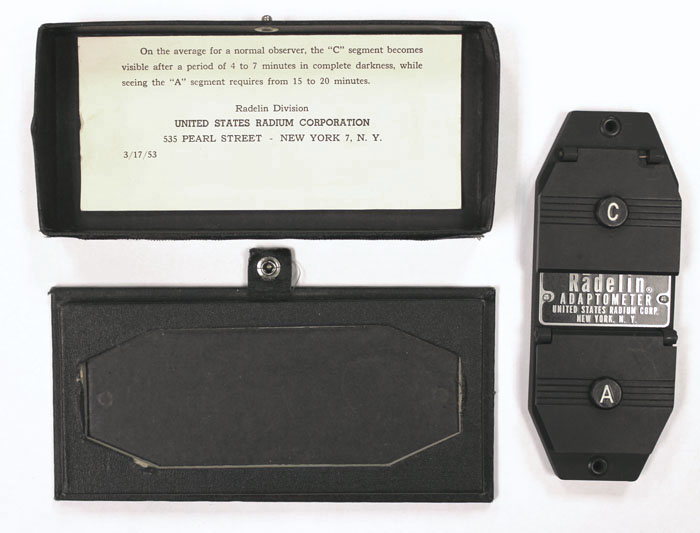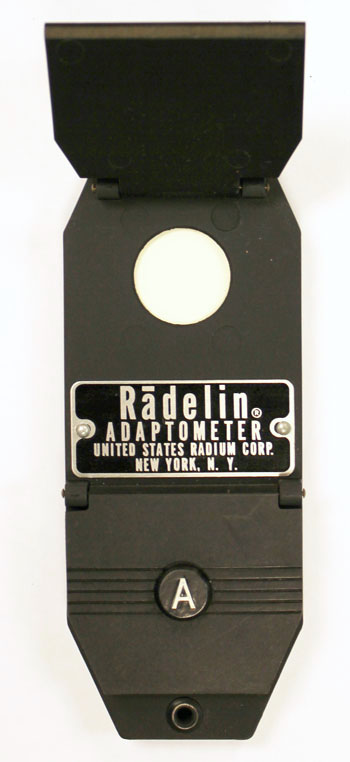Radelin Adaptometer (ca. 1953-1960)

At the time that the Radelin Adaptometer was marketed (ca. 1953-1960), radiologists were required to view fluoroscopic screens in a darkened room—electronic imaging had not yet arrived. If the radiologist’s eyes were not properly dark-adapted, important features of the image on the screen might be missed. In addition, the patient might be subject to an unnecessarily long exposure. The Adaptometer provided a convenient method by which the radiologist could assess how well their eyes were adapted to the dark.
It was manufactured by the United States Radium Corporation at 535 Pearl Street, New York, NY. Radelin was the name the company employed for a group of proprietary phosphorescent compounds.
The adaptometer was typically mounted at eye level, either on the wall or next to the fluorescent screen. Inside, it employed two C-14 activated radioluminescent disks that differed in their light output by a factor of ten.
When the radiologist believed that they had given their eyes sufficient time to become accustomed to the dark (as little as 4 minutes or as many as 20), he or she would uncover one of the adaptometer disks and attempt to see it. The viewing distance would be more or less the same that they would use to view the screen of the fluoroscope (e.g., 10 to 20 inches).

If the upper disk (marked C) could be seen, the eyes were sufficiently adapted for assessing fluoroscopic images of the chest and the thinner parts of the body. If the lower disk (marked A) was visible, the “eyes are accommodated for fluoroscopy of the abdomen.”
At this point, the high voltage could be applied to the x-ray tube and work could begin.
Two nice things about this device: radiation exposures from the C-14 were essentially non-existent and the long half-life of C-14 ensured that the adaptometer’s light output would remain constant for years.
According to the catalog description “You’ll wonder how you ever got along without it.”
Size: Approximately 5.5” x 2” x 0.35”
Reference
General Electric. X-ray Supplies and Accessories. 1953-1954.
